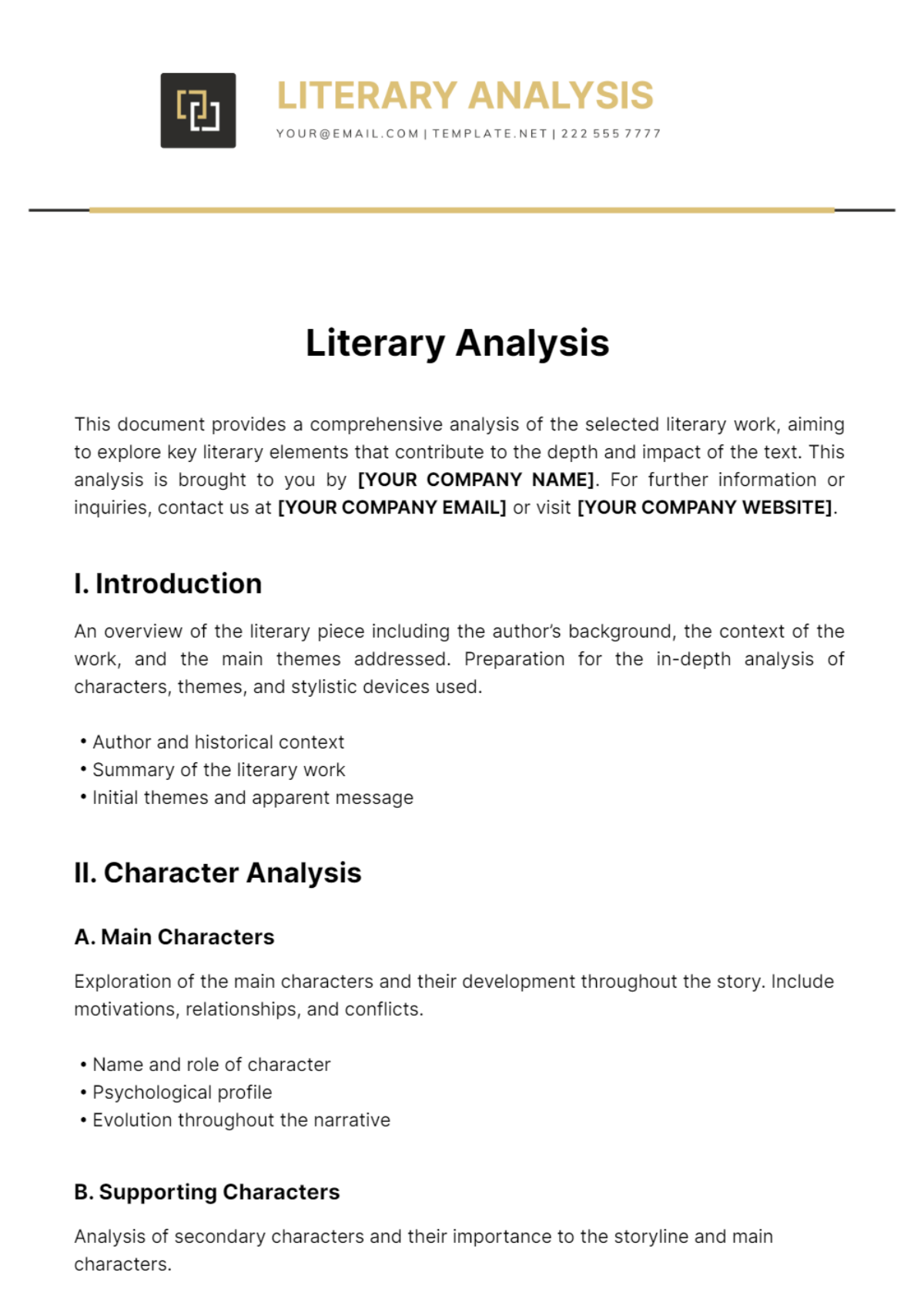Literary Analysis
This document provides a comprehensive analysis of the selected literary work, aiming to explore key literary elements that contribute to the depth and impact of the text. This analysis is brought to you by [YOUR COMPANY NAME]. For further information or inquiries, contact us at [YOUR COMPANY EMAIL] or visit [YOUR COMPANY WEBSITE].
I. Introduction
An overview of the literary piece including the author’s background, the context of the work, and the main themes addressed. Preparation for the in-depth analysis of characters, themes, and stylistic devices used.
Author and historical context
Summary of the literary work
Initial themes and apparent message
II. Character Analysis
A. Main Characters
Exploration of the main characters and their development throughout the story. Include motivations, relationships, and conflicts.
B. Supporting Characters
Analysis of secondary characters and their importance to the storyline and main characters.
Roles and connections to main characters
Contributions to the main character’s arc
Symbolic meanings or motifs associated with these characters
III. Thematic Analysis
Detailed examination of the themes presented in the literary work and their relevance to societal, cultural, or personal issues.
Major themes and their implications
How themes interact with the plot
Comparisons to contemporary issues
IV. Symbolism and Literary Devices
A. Symbolism
Interpretation of key symbols used throughout the literary piece and their significance to the overarching message and themes.
Important symbols and motifs
Interpretations and representations
Impact on reader’s understanding
B. Literary Devices
Analysis of the literary techniques and devices used by the author, including but not limited to imagery, irony, foreshadowing, and allusion.
Examples of literary devices used in the text
Effectiveness of these devices in the narrative
Contribution to the textual richness
V. Plot Structure and Narrative Techniques
Examination of the structural elements of the work, including narrative perspective, timeline complexities, and the overall plot construction.
Outline of the plot structure
Analysis of narrative techniques: first-person, third-person, etc.
Effect of structure on storytelling
VI. Conclusion
A summarization of the findings from the analysis, reflecting on the impact and significance of the literary work as a whole. Suggestions for further reading or study based on the analysis.
This document was prepared by [YOUR COMPANY NAME]. Visit us at [YOUR COMPANY WEBSITE] For any additional information or support, please contact us at [YOUR COMPANY EMAIL].
Analysis Templates @ Template.net






























